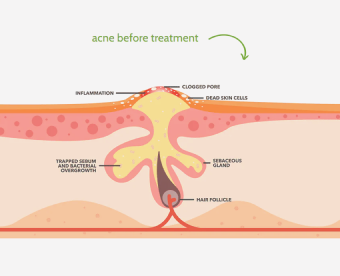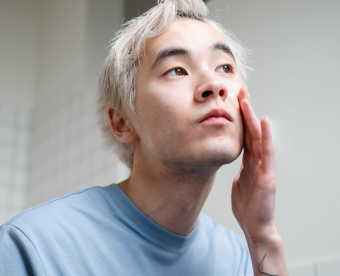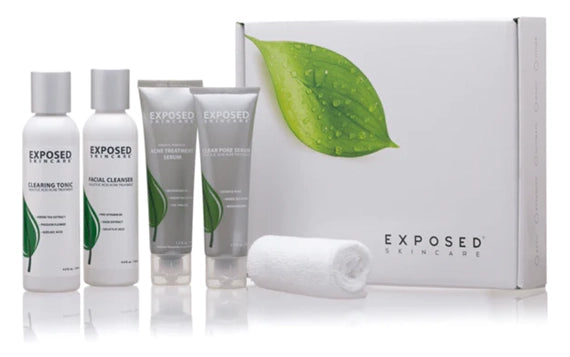Acne, particularly acne vulgaris, is a common skin condition that plagues many people worldwide. Various treatment options exist, from over-the-counter topical solutions to oral medications prescribed by a dermatologist. One such oral antibiotic that's sometimes used to treat acne is cephalexin, a medication typically used for skin infections.
Cephalexin, commonly known by its brand name Keflex, belongs to the cephalosporin class of antibiotics, similar to penicillin. It's commonly prescribed to treat a variety of bacterial infections, but is it truly effective as a treatment for acne? Let's explore why using cephalexin for acne might not be the best idea.
Also read: How to choose the best acne treatment
Biggest Take-Aways:
- While used in some instances, Cephalexin is not a specialized antibiotic for acne and its efficacy in treating acne is not well-established.
- Using cephalexin for acne can come with potential side effects and health risks, including antibiotic resistance.
- There are more effective acne treatments available, including doxycycline, isotretinoin, and comprehensive skincare regimes.
- Exposed Skin Care is an acne treatment regimen that combines science and nature, posing fewer risks of major side effects compared to oral antibiotics like cephalexin.

The Misplaced Efficacy of Cephalexin for Acne Treatment
Cephalexin - Not a Traditional Acne Treatment
Cephalexin, as an antibiotic, is not primarily used for acne treatment. It's generally used to treat bacterial infections, including skin infections. However, it is not specifically designed to handle the type of bacteria that contribute to acne, like Propionibacterium acnes.
The Incomplete Battle Against Acne
Cephalexin targets bacterial infections, and while bacteria can influence acne, it's not the only factor. Acne is a multifaceted condition influenced by hormones, sebum production, and even genetics. Therefore, an antibiotic may not comprehensively solve this complex problem.
Potential Side Effects and Health Risks
The use of cephalexin comes with potential side effects. These range from minor discomforts such as diarrhea to more severe health risks. Prolonged use of cephalexin may also lead to antibiotic resistance, a global health concern that could make treating bacterial infections more challenging in the future.
Comparing Cephalexin to Other Acne Treatments
While cephalexin has been used to treat acne, other treatments such as isotretinoin, doxycycline, minocycline, and tetracycline antibiotics, may work better in managing acne vulgaris.
Doxycycline and Minocycline
Doxycycline and minocycline, tetracycline antibiotics, are often prescribed for acne. They have been shown to help decrease inflammation and reduce the number of pimples and cysts, key characteristics of inflammatory acne.
Topical Treatments
Various topical treatments, including topical antibiotics and retinoids, are often first-line treatment options for acne. These treatments help reduce inflammation and prevent the clogging of pores, which can lead to acne breakouts.
Isotretinoin
Isotretinoin (also known as Accutane) is a powerful oral medication used to treat severe acne when other treatments fail. While it comes with its own side effects, its usage has shown considerable efficacy in reducing acne lesions.

Delving Deeper: Issues with Long-term Antibiotic Use
Antibiotic Resistance
A major concern with the long-term use of any antibiotic, including cephalexin, is antibiotic resistance. This occurs when bacteria mutate and become resistant to the antibiotics designed to kill them. The resulting "superbugs" can be far more challenging to treat.
Potential Side Effects
Long-term antibiotic use comes with potential side effects. Some people may experience diarrhea, nausea, vomiting, and allergic reactions. Additionally, prolonged use of cephalexin may also disturb the body's normal flora, leading to an overgrowth of yeast or other bacteria.
Inadequate Treatment of Hormonal Acne
Hormonal acne, typically characterized by breakouts along the jawline and chin, often requires a treatment plan addressing the underlying hormonal imbalance. Antibiotics, including cephalexin, don't affect hormone levels and might not effectively treat this type of acne.
Cephalexin Dosage and Prescribing Practices in Dermatology
In dermatology, prescribing cephalexin for the treatment of acne is not unheard of, especially when other antibiotics fail to bring relief. However, the dosage and duration of taking cephalexin for acne can significantly impact its efficacy and the occurrence of side effects.
Cephalexin dosage prescribed by dermatologists typically falls between 250 mg to 500 mg, administered two to four times a day. However, there's a lack of definitive, peer-reviewed studies detailing the most effective dosage for treating acne. Thus, the dosage may vary significantly from one patient to another based on their condition and the dermatologist's discretion.

Comparatively, the dosage of other antibiotics used to treat acne, like doxycycline, is often well-defined. For instance, doxycycline is available in a dosage of 100 mg twice daily for acne treatment. Here are some considerations when taking antibiotics for acne:
- The duration of treatment is typically prolonged, ranging from weeks to months.
- The antibiotic must be taken consistently to achieve desired results.
- The potential for side effects increases with the duration of antibiotic use.
The Role of Cephalexin in the Broader Acne Treatment Landscape
Cephalexin, like other antibiotics including azithromycin, amoxicillin, and macrolides, is used to help combat acne-associated bacteria. However, cephalexin is not a specialized acne-fighting drug. Since cephalexin is not primarily an antibiotic for acne, it's often not the first option prescribed by a dermatologist.
In a U.S based study, only 93 out of every 1,000 acne patients were prescribed cephalexin as a treatment. It was found that eighty-four percent of patients saw significant improvement in their acne while using cephalexin. However, the lack of high-quality sources or peer-reviewed studies on this topic makes it challenging to gauge the true efficacy of cephalexin in treating acne.
While using antibiotics, such as cephalexin, to treat acne can lead to improvement, it's essential to understand the potential pitfalls:
- Antibiotics do not address the root causes of acne, including hormonal imbalances and excessive sebum production.
- Overreliance on antibiotics can contribute to antibiotic resistance, making future bacterial infections harder to treat.
- Long-term use of antibiotics may cause unwanted side effects, such as gastrointestinal disturbances and skin discoloration.
The Benefits of Exposed Skin Care for Acne Management
While dermatologists have prescribed antibiotics such as cephalexin for acne treatment, there's an increasing interest in comprehensive skincare regimes such as Exposed Skin Care. This skincare line has been designed specifically to help treat acne and manage its symptoms.
Exposed Skin Care system employs a unique approach to combat acne. The benefits of this skincare regimen include:
- It uses a combination of science and nature, incorporating proven acne-fighting ingredients such as salicylic acid and benzoyl peroxide and natural extracts like green tea and licorice root, known for their anti-inflammatory properties.
- The step-by-step routine helps to cleanse, treat, and moisturize the skin, addressing all stages of the acne lifecycle.
- Unlike drugs for treating acne, such as a high dosage of doxycycline or cephalexin, Exposed Skin Care poses fewer risks of major side effects.
- It aids in the 'purge' phase, where existing acne comes to the surface and is expelled from the skin.
Peer-reviewed studies have shown the effectiveness of comprehensive skincare regimes like Exposed Skin Care in managing acne. Therefore, they can form a valuable part of any complete guide to acne treatment, offering a less risky alternative to oral antibiotics.
Conclusion
Navigating the world of acne treatment can be overwhelming, with numerous options available, including various antibiotics and skincare regimens. While dermatologists have prescribed cephalexin in some instances, it's essential to remember that it's not a specialized antibiotic for acne treatment. The use of cephalexin for acne can come with side effects and potential health risks, including the concerning issue of antibiotic resistance.
Compared to cephalexin, other treatments like doxycycline and isotretinoin, which are more tailored toward acne, have proven more effective. Moreover, comprehensive skincare regimes like Exposed Skin Care have been gaining traction. This regimen merges science and nature, providing a more holistic approach to managing acne while posing fewer risks of major side effects.
With all the available information, including peer-reviewed studies, it's evident that cephalexin may help some individuals with acne but is not the optimal solution for everyone. Therefore, when considering treatment options for acne, it's crucial to assess each option's potential benefits and risks. Always remember, the journey to clear skin may be a 'purge' process of trial and error, but the result can be incredibly rewarding.
Frequently Asked Questions
Can Cephalexin Treat Acne?
While cephalexin has been used to treat acne, it is not typically the first treatment choice for this condition. It's primarily an antibiotic used to treat a variety of bacterial infections. Its efficacy in treating acne is not well-established.
What Are the Side Effects of Cephalexin?
Some common side effects of cephalexin include diarrhea, nausea, vomiting, and allergic reactions. Long-term use of cephalexin may also contribute to antibiotic resistance.
Are There Better Alternatives to Cephalexin for Acne Treatment?
Yes, there are more effective treatments for acne, including other oral medications like isotretinoin and topical treatments. Hormonal treatments, like birth control pills, may also be used in some cases.
How Long Does It Take for Antibiotics to Show Results on Acne?
The average duration for antibiotics to show improvements in acne varies between individuals and the type of antibiotic used. However, seeing noticeable results typically takes about three to four months.
















